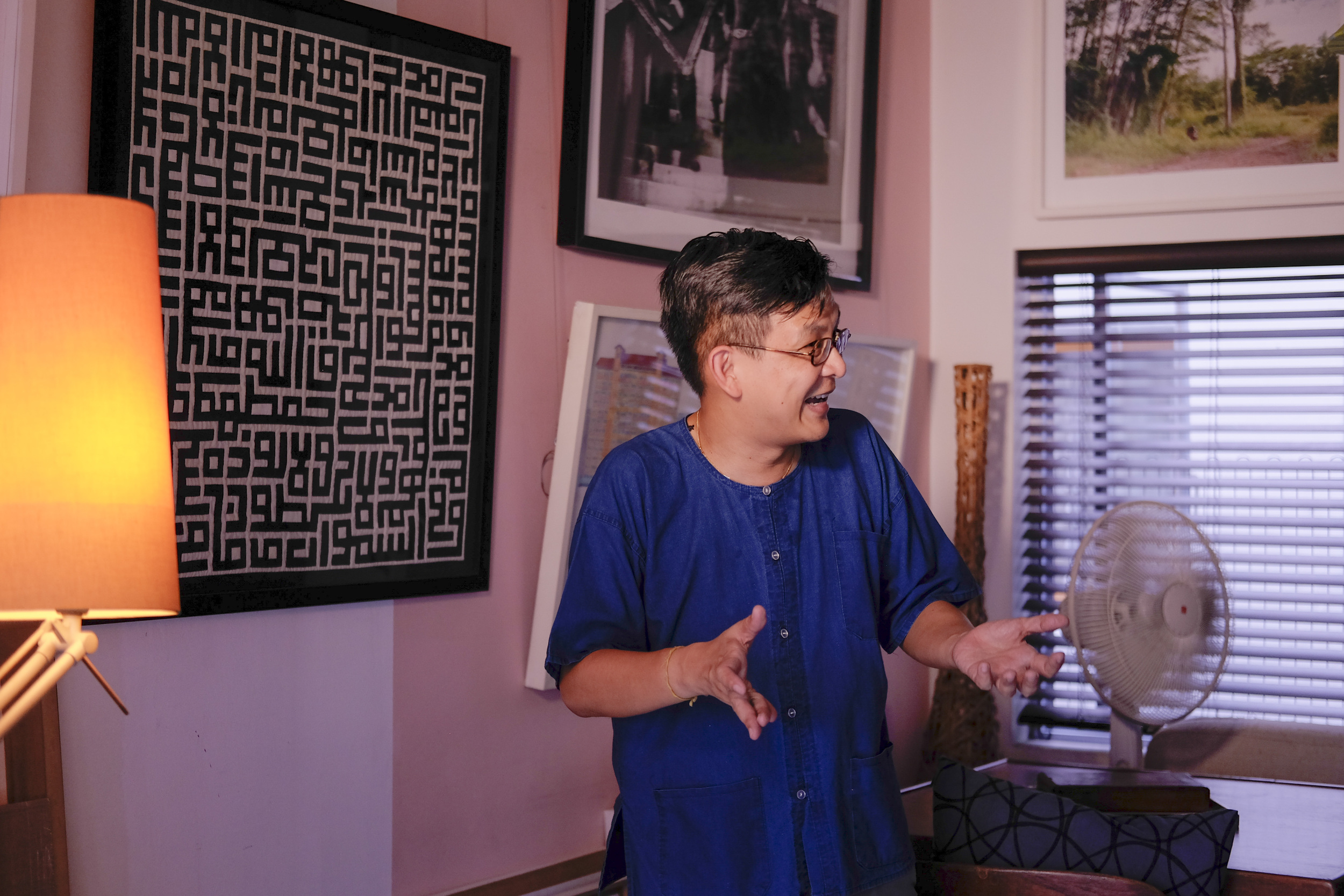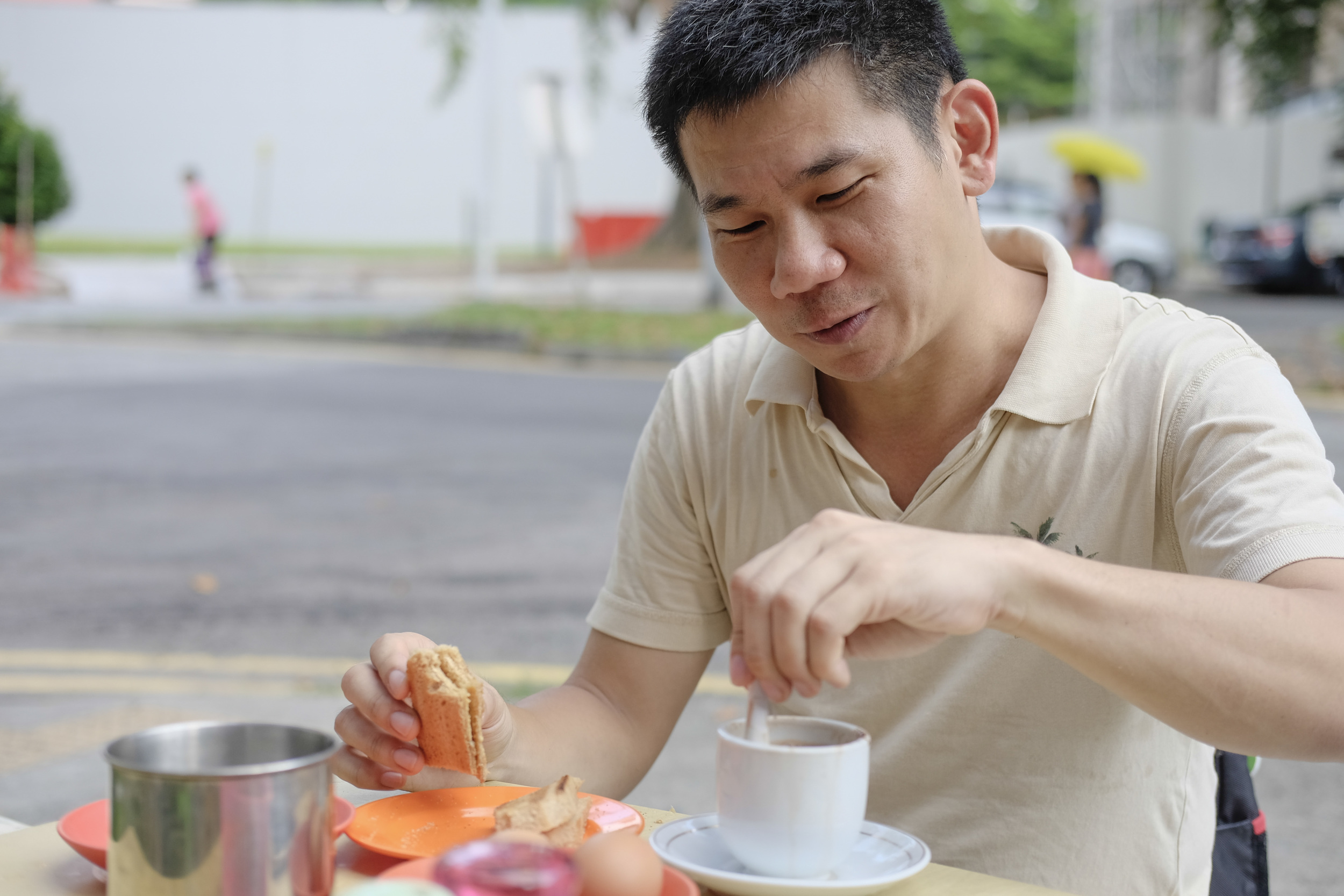When Talk Of Heritage Magnifies Change
By Carolyn Oei, 16 July 2016
(Photos: Marc Nair)
According to the Oxford Dictionary, the word “heritage” is a noun that denotes valued objects and qualities such as historic buildings and cultural traditions that have been passed down from previous generations.
In Tiong Bahru Estate, Singapore’s oldest residential neighbourhood, some of the essence of generations past endures – the Monkey God temple and its colourful celebrations, elderly residents in their 80s who have spent their lives here, the uncle who sells char kway teow (rice noodles fried with lard, black sauce and cockles – not to be eaten daily).
But for how much longer? Even the temple as a structure isn’t a sure thing for the longer term. Most things have fairly short shelf lives in Singapore.
For the last 10 years, the estate has changed dramatically from the inside out. The art décor apartment blocks in the post-war part of the estate and the aviation- and maritime-inspired designs of the older pre-war part serve as physical reminders of what was.
But, they are only facades and do not necessarily represent what is.
Because of its recent popularity as “nostalgia’s best kept secret”, hipster coffee joints and boutique shops sprouted like kang kong (the poor man’s vegetable that grows anywhere, even in drains). So much so that the authorities had to slap a limit on the number of F&B licences that could be issued.
As older residents died (literally), investor buyers took over, illegally carving up their apartments into smaller units for rent. And those that haven’t been carved up have been rented out, nonetheless, to a new transient community of residents; short-term (Air BnB) and longer-term (working expats) tenants.
Bus-loads of foreign tourists come here to learn more about Singapore’s history; droves of local visitors come here for the food (the local cuisine in the market, incidentally) or to hang out at one of the cafes or to take Instagrammable photographs in the alleys; local and foreign film crews use the estate as a backdrop for nostalgia related projects.
A tour bus pulls in by Tiong Bahru Market. For photographs of the estate's cafés and hipster-friendly alleyways, simply scour #tiongbahru on Instragram.
But, what does “heritage” even mean in a neighbourhood like Tiong Bahru?
In search of insight, we spoke with two community stalwarts who have been volunteering their time to, if you will, preserving the history of Tiong Bahru.
TIONG BAHRU HERITAGE VOLUNTEERS (TBHV)
It is often – almost always – the case that real change is effected from the ground up.
After the National Heritage Board officially launched the Tiong Bahru Heritage Trail in April 2013, the question of how to keep people interested in it popped up.
“That’s how TBHV started. There was a demand for their expertise and experience in heritage. There were even requests for corporate tours,” says Kelvin Ang, chairman of the Seng Poh Residents Committee since 2010.
While Kelvin facilitated administrative matters, Choo Lip Sin, a long-time heritage aficionado, set about recruiting other co-founders for the TBHV group. I joined the group some time in 2013.
Kelvin adds, “It was all quite ad-hoc. We saw what our neighbours in Queenstown were doing and thought that something like that could work here, too. And, we were clear that we wouldn’t charge a fee because we are volunteers after all and don’t want to eat into the rice bowls of licenced guides.”
All for the love of history. And good thing, too, because TBHV and groups like it have made history and heritage more accessible.
Lip Sin explains, “The subject was previously taken up only by academics, architects and serious writers…(but) it’s no longer coming from academic sources. Communities are more conscious about identifying themselves with their place and neighbours.”
Objectively speaking, that sense of going back to the beginning might be more substantial in a place like Tiong Bahru.
“It makes a difference that residents and business owners (in Tiong Bahru) are still very active,” quips Lip Sin. Unlike in Chinatown or Clarke Quay, which are façades and shells of the original, and where the engagement is challenging at best. Still, places that have gone through adaptive re-use would make for interesting subject matter for deeper research and discovery. Opportunity for imagination has its own value; its also fascinating.”
Photos: Left - Kelvin Ang, Chairman, Seng Poh Residents Committee. Right - Choo Lip Sin, a founding member of the Tiong Bahru Heritage Volunteers.
WHY DO WE WANT TO REMEMBER?
“I want to remember because it is an opportunity to learn,” Lip Sin proffers.
“When you share your knowledge, people open up with their own stories. As a guide, I often encounter people who are willing to share their story without any prior intention of doing so. Remember that old couple on our last walk?”
He was talking to me.
Yes, I do. We had just started the tour and were walking down the alley behind the community centre when we chanced upon an elderly couple at their back door. They had just come back from the market.
They didn’t need much inviting and happily told the group how the husband had lived in the estate for 76 years. And counting.
Lip Sin picks it up again, “There was also this other uncle, Mr P, who talked about his memories of the air raid shelter. He’d lived at the Singapore General Hospital staff quarters. Mr P came over to Tiong Bahru a lot to play.
“We didn’t know how to engage someone like him, but it was my good fortune that as the tour group was walking past his block, he stopped us and told us his story.”
THE IMPORTANCE OF HERITAGE: PHYSICAL REALNESS AND THE BLADE RUNNER
I’d like to understand our desire to remember beyond the “know where you come from” and nation-building narrative. It’s a philosophical discussion and we bring out the whiskey to help us along.
Kelvin begins, “Once you have an idea of your different pasts, you realise there will always be multiple objectives. Life is a mix of these disparate objectives. Life is messy. For a greater understanding of this universe, heritage is a tool.”
“Do you tie heritage to a place? Like Tiong Bahru?”
“I’m happy that I’m tied to a place. Because it reminds me that it isn’t my imagination. There’s a powerful scene in The Blade Runner where the question, ‘How do you know that you’re real? Or that your past is real?’ (paraphrased) is asked.
“Physical change is critical. If the physical is destroyed or dismantled, how do you validate yourself?
“I go back to London* and because it hasn’t changed that much physically, I feel at home there, even if I’ve left it for a year. It is not the way I might feel at home here if I leave it for a year.
“There’s something about physical change that we cannot deny. That crutch we use to reaffirm our own sense of time and place and memory.
“The android’s memories were all manufactured.”
“But this isn’t exactly your heritage, your physical heritage, I mean.”
“It’s mine now. And in a strange way, my moving here was fated. When I lead the tours, I always ask people if they know people who live here…When I was young, I came here often because my kindergarten teacher lived here. And there’s the Monkey God Temple; my grandmother used to worship here. So there are some connections to my early childhood; pre-existing anchors."
*Kelvin references London where he spent some time reading for his Masters.
Kelvin feels settled in his place in Tiong Bahru.
CHANGE ISN'T ALWAYS WELCOME, BUT IT IS INEVITABLE
And that change is driven by soul, the very insides of a place. The Housing Development Board (HDB) and the Urban Redevelopment Authority (URA) impose rules on residents in Tiong Bahru with regards to refurbishment and renovation works. The buildings must look just so.
But as the estate and its people age, and as the pallor intensifies with fewer owner residents and more transient tenants, it is only the buildings that look just so.
“In the past eight years, many people have moved out of the estate. Moved on. For better or worse, we have fewer people who are invested,” says Kelvin.
“What attracted me to Tiong Bahru in the first place was that I thought that it would not change.”
“But, it has.”
“Yes, it has! I first involved myself as a member of the residents committee (RC) in 2006/7 (shortly after I moved in). Yah, I was very kay poh*. Why like this? Why like that? I wasn’t happy with a few things. As an RC member, I could see the changing demographics, the increasing number of visitors, the economic change on the streets and you could see the social tension that was happening. For example, people who were moving in weren’t able to accept the local scene. Why is there street opera? We should shut it down, it’s too noisy! Why are people burning paper in the streets?
“Excuse me, you moved in here!
“At the same time. I also wasn’t aware that I was part of the change! Like a documentary maker. By documenting a thing, aren’t you an agent of change? Like you writing this story. Even in the process of bettering the neighbourhood, you will cause change. You cannot stop change, but you can manage it. My motivation as committee chairman is finding ways to use change to the neighbourhood’s benefit.
“Instead of going on a negative offensive, a ‘take it or lump it’ attitude, I thought it would be a better idea to raise awareness and engagement. This is where the heritage tours come in; to drive deeper interest and care for the neighbourhood.
“You can’t force people to care, but you can encourage or influence them to do so.”
*kay poh = busybody, nosy parker
Photos: Lip Sin leading a tour on a sunny (and very warm) Saturday morning. All TBHV guides are volunteers.






